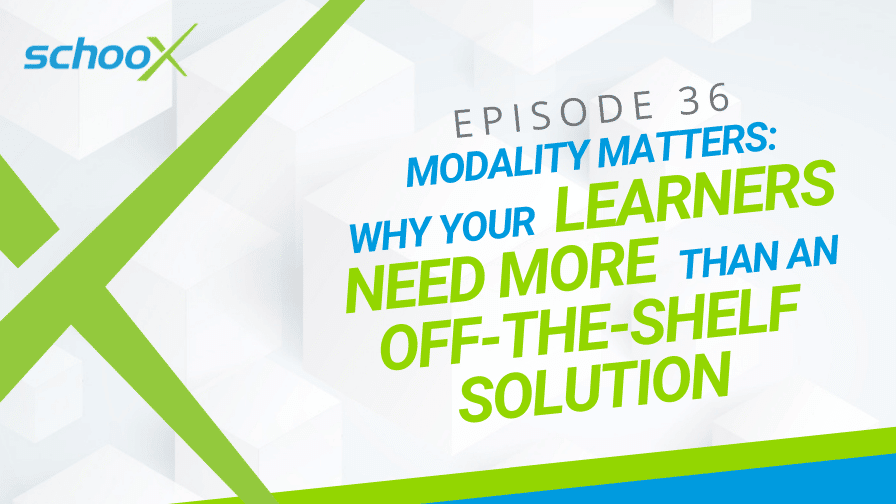29 June 2021
5 Min Read

It’s a learning and development professional’s job to not just deliver training content but also to consider the modality and ensure the knowledge sinks into the minds of your learners.
This is much easier said than done. So, how do you create learning content that resonates, sinks in, and is retained after a training session?
The solution may not be what you include in your content but more about how you deliver it.
In this episode of The Learning Xchange, Matthew Brown, Schoox’s VP of Learning and Brand Success, discusses why modality matters.
He shares his thoughts on why organizations should add additional content on top of pre-built training solutions to improve engagement. He also talks about why L&D professionals should take note of learners’ different learning styles.
Listen to the podcast below or keep reading to hear more.
Times have changed: Revisit your training delivery methods
We live in an age of change. The old rules and ways of doing things often don’t apply as they did a few years ago. This has been an adjustment for everyone and learning and development professionals have had to revisit their training delivery methods.
When it comes to offering value to your learners, most would agree that a one-size-fits-all approach is just not effective. That’s especially the case in this current world of always-on technology and the constant competition for headspace and attention.
If we want to ensure that knowledge is transferred, gained, and applied to a job, we need to go beyond the one-size-fits-all approach.
It’s very easy for L&D professionals to deliver solutions like these because you buy or build them once, and everyone is put through the process. It becomes a factory-like mindset that is easier to manage in a busy company or when there are time constraints.
However, think carefully before relying on this approach. Think about the needs of your learners. You may just find that the longer route makes more sense.
When bearing your learners’ needs in mind, it makes sense to use a wide array of different learning approaches and tactics. This could mean making use of micro-learning, structured e-learning, infographics, blogs, peer-to-peer interactions, and other formats.
By exploring all the different options and mediums out there that suits an employee’s optimal learning modality, you can truly start to support them and help them succeed.
How to consider a learning modality if you have a pre-built solution
If you have bought a third-party or off-the-shelf training solution, you may believe that your hands are tied.
In reality, this doesn’t have to stop you from delivering what your learners need. You can always bring in some additional components to provide support to the pre-built program. You can extend the learning potential from that original piece of content and ensure that it sinks in.
Let’s look at an example. Take anti-harassment or security awareness training. These are common training programs that most people will go through at some point in their professional lives. Often, companies will outsource this or buy a pre-built solution. This is so they don’t have to worry about getting all the regulations and rules right in the content itself.
The problem is that they end up feeling like a page-turner conference. One where everyone’s watching or listening and navigating through the content almost mindlessly.
This doesn’t mean that the content is bad. It might have lots of different interactions and video elements. Or, it could also have questions to answer or even a full-blown exam at the end.
This may be a great, effective way to introduce the topic. And it certainly checks the box. But there are other ways to extend the learning to ensure people take something away when they leave the room.
How to extend your learning content
You want to make sure people retain course information for more than five minutes after the course ends. To do this, create a bunch of content to go with it.
This could be a quick reference guide to help your learners recall the most important information. Alternatively, you could create an infographic highlighting elements from the course or relating them to the organization specifically.
Alternatively, include personal messages from your leadership team. For example, in a video message or an audio clip slotted into the course. This could highlight the commitment from leadership that they want to support their employees in their learning.
Help the messages sink in. For instance, experiment with quizzes or smaller informal tests to ensure that the course is doing its job.
Alongside the main course, you could either create or collate resources like podcast episodes, infographics, even explorative scenario-based journeys. These tactics can all encourage critical thinking and logic, which helps the message of your content stick.
All of this helps to keep the learners engaged and gives them the best chance of success. You can easily make the training courses much more personalized and fun as well.
Bear different learning modalities in mind
There are many benefits of varying your approach to learning. One of them is that, by using different mediums, it reflects your audience.
Your learners all learn in different ways. A learning modality, or style, that resonates with one person may not have the same effect on another. So having a varied approach is not just more interesting, it’s also the more effective approach.
Tap into the needs of each learner. It will help you build a program that keeps as many people as engaged as possible. With more engagement, you have more knowledge transfer and retention.
RELATED RESOURCES



